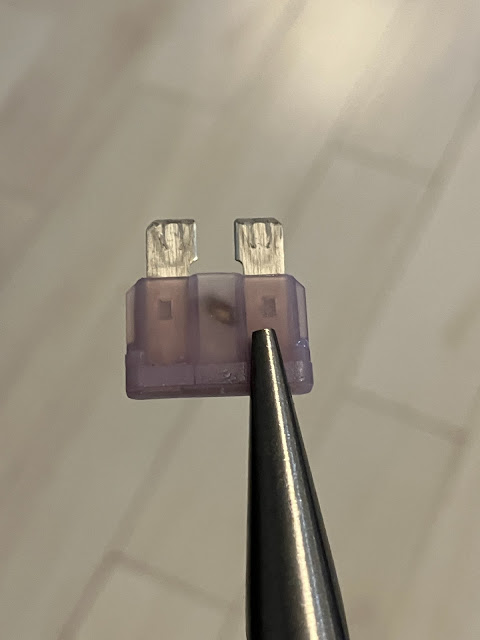So for pretty much as long as I've lived here, the AC compressor has had a bit of a rough time starting, particularly in very hot weather. Early on I checked the start/run capacitor and it seemed to test fine, so I basically just ignored it since it was still basically working. Later, after it didn't show any signs of magically fixing itself, I added a hard start kit, which is basically an extra start capacitor that switches in when the compressor motor is starting up to give it an extra boost, then switches back out once the motor spins up so as not to fry the start windings. That seemed to improve things a little bit, but there were still times when the AC would just growl and stall instead of starting up properly.
Now despite their outward appearance, a modern AC outdoor unit only really consists of a few parts: the compressor, the fan, the refrigerant plumbing, a start/run capacitor for the compressor and fan (either a combined unit or two separate caps), and a contactor, which is a fancy name for the high current relay that turns the whole thing on.
Given I'd ruled out the capacitor as the issue, and given that replacing the compressor would basically mean getting a whole new HVAC system at this point, I decided to tackle the only other part that could be to blame: the contactor.
And it's comforting to know that it has a definite purpose.
Thankfully these things are stupid cheap. This one was a whole $14 delivered to my door. And since it was delivered to my door, the next logical step is to install it.
Make sure to turn the power off to the AC unit first. And, if you're smart, turn the power off to the furnace as well so that you don't blow the fuse on the 24v control circuit if you accidentally short out the relay leads when the thermostat calls for cooling.
A quick peek in-situ shows that these contacts have probably seen some shit.
Anyway, we're just replacing like-for-like, so out with the old and in with the new.
Then button everything up, switch the power back on, and...
... yeah, remember what I said about shorting out the relay leads?
It's a very effective way to blow a fuse.
Thankfully I have a big box of replacements.
And you know, the 35A fuse is the same colour as the 3A fuse, and would probably blow a lot less easily...
Ok, just kidding, I put the 3A fuse in.
Ahh, much cooler.
Now that the old contactor is out, we can have a closer look at the terminals.
Ok, sure, it's possible I could get in there with some emery cloth and clean up those contacts and put this one back in service, but for $14 this is just going in the trash. I'll be happy to pay that again in another 20 years once the new one wears out.











No comments:
Post a Comment